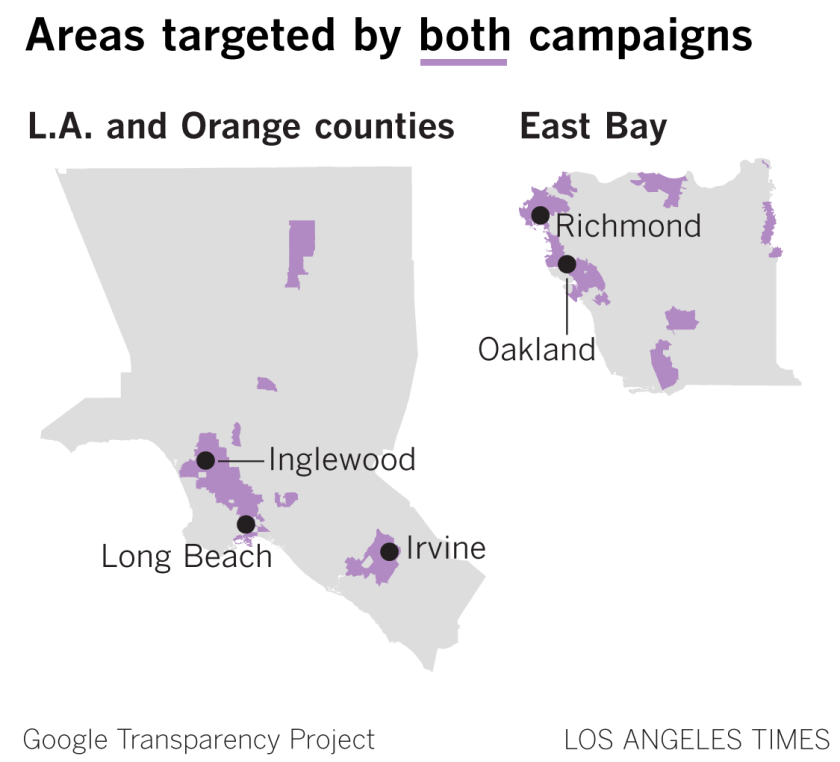As California’s recall election continues, campaigns are pouring millions into ads on Google and its world-leading video site, YouTube.
More than $3.6 million has been spent on ads about the recall, according to spending data released by the internet giant. The majority of that has come from a political fundraising group organized to defend Gov. Gavin Newsom, which has invested $3.03 million in ads urging voters to reject the recall.
Among Newsom’s opponents, the top spender is conservative radio talk show host Larry Elder. As his campaign has gathered steam, he has poured more than $400,000 into ads.
Nearly two-thirds of the ads aired by groups backing Newsom and Elder only appeared for users in specific ZIP Codes. The “Stop the Republican Recall of Governor Newsom” group aired ads on the coast in the state’s densely populated Democratic strongholds, while Elder’s campaign committee has opted for inland areas where Republicans are more common.
A Times analysis of records from Jan. 1 to Aug. 31, released by the Google Transparency Project, shows the rival camps are using the platform’s vast collection of user data to target areas they see as key to victory.
The result is two different campaigns aimed largely at two different Californias.
There is some overlap, however. Areas targeted by both campaigns include Irvine, South Central Los Angeles and the east Bay Area. These areas leaned Democratic in the 2020 election, but Elder is hoping his background will help him gain support.

In a video ad, Elder, who graduated from Crenshaw High School in 1970, speaks about his upbringing in South Los Angeles. Elder discusses his journey to an Ivy League university, and how he believes that pipeline doesn’t exist anymore because the “quality of the schools has declined.” He advocates for alternatives to public schools, such as charters and vouchers, that he says would “give parents an option out.”
Many of Elder’s targeted ads also promise lower taxes, accuse Newsom of corruption, and tout the talk show host’s desire to “bring back the California dream.”
Newsom’s defenders are running targeted ads in both English and Spanish. In one video ad that appeared in both languages, the narrator tells voters that what’s at stake in this election is “a matter of life and death.” Touting Newsom’s efforts during the pandemic, the narrator then says Elder would eliminate mask and vaccine mandates.
Other targeted ads tell voters to reject the “Republican recall” and highlight Newsom’s record on employment, homelessness and the environment.
As election day nears, both campaigns have increased the number of ads running on Google and YouTube. More ads don’t necessarily mean more audience — or more spending. Ads on the platform vary in price and reach based on the intricacies of Google’s system. The Newsom campaign is buying more expensive video ads, while Elder’s campaign opts for less expensive text and image ads.
Although these ads account for only a fraction of the $110 million raised by campaigns in the recall election, the targeted campaigns are a demonstration of how political players use technology to navigate the political division in California. Learn more about the race in The Times’ recall election guide.





